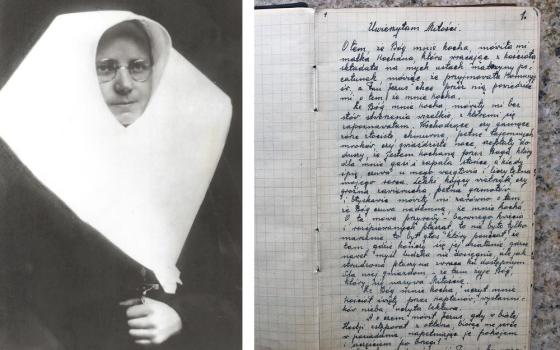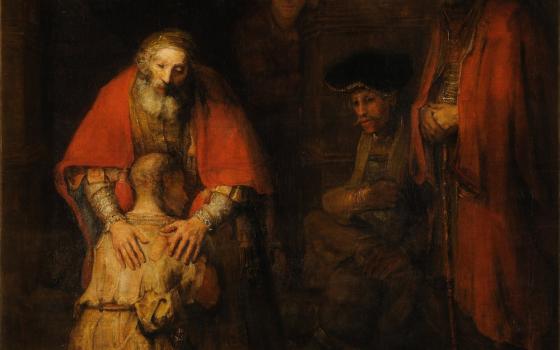In an infuriating combination of events, the Vatican rang in Women’s History Month by once again paying lip service to women’s equality while showing its true colors. The day before Pope Benedict XVI called for increased commitment to women’s dignity, a Vatican official announced his support for the excommunications of the mother and doctors of a nine-year-old girl who had an abortion after being raped by her stepfather.
In Brazil, abortion is illegal except in cases of rape or when a woman’s life is in danger, and both stipulations were fulfilled in this heartbreaking case. The doctors determined that the girl, who weighed only eighty pounds, would not survive this pregnancy. The girl’s 23-year-old stepfather admitted to sexually abusing her for several years, and he is also suspected of abusing her physically disabled 14-year-old sister. He has since been arrested and placed in protective custody.
Last Saturday, Cardinal Giovanni Battista, prefect of the Congregation for Bishops and president of the Pontifical Commission for Latin America, defended the excommunications first announced by Archbishop Jose Cardoso Sobrinho, the girl’s local archbishop. The very next day, on March 8—International Women’s Day—Pope Benedict stated, “Today's date invites us to reflect on … our commitment that always and everywhere every woman can live and fully manifest her particular abilities, obtaining complete respect for her dignity."
How can this egregious hypocrisy even be possible?
Excommunicating this child’s mother and doctors, who, in good conscience, saved this girl’s life is the exact opposite of displaying “complete respect for her dignity.” It is inexcusable and appalling. The church had the opportunity to show pastoral care to a family torn apart by violence. Instead, they intensified the pain, trauma and injustice in what can only be called spiritual violence.
This is a prime example of the devastating impact that the hierarchy’s cultural influence often has on women. When it comes to women’s issues, this type of hypocrisy – on a less horrific scale – is the norm in the hierarchy of the Roman Catholic Church.
At a time when the pope endangered 40 years of Catholic-Jewish dialogue by lifting the excommunication of a bishop who is a Holocaust denier, and amid revelations that the founder of the Legion of Christ, Fr. Marcial Maciel Degollado, was not only a pedophile but also the father of at least one child, the Vatican decided to launch an “apostolic visitation” to investigate women’s religious communities in the US.
These recent developments are part of an all-too-familiar pattern. In the past year, women and men who publicly support increasing women’s roles in the church have been penalized and excommunicated, under the same automatic and self-imposed penalty that the mother and doctors in Brazil supposedly incurred.
Fr. Roy Bourgeois’ threat of excommunication is still pending for his participation in a woman’s ordination. Sr. Louise Lears, a Sister of Charity who has dedicated her life to serving the church, was penalized by Archbishop Raymond Burke of St. Louis for attending the ordination of two Roman Catholic women.
Last May, on the feast of Joan of Arc, the Vatican excommunicated over 60 Catholic women for prophetically obeying their calls to ordination and being ordained by bishops who claim apostolic succession. The hierarchy is using the Sacraments as a weapon, and it is not working.
We have heard many of these brave people tell their story, and it is clear that their communities embrace them, and their message is coming across loud and clear: they cannot work for justice in society without also working for justice within their church.
While ordained men obliterate their only remaining shred of moral credibility, the Catholic women who run soup kitchens, schools, hospitals, homeless shelters, and numerous social justice ministries face investigation or excommunication. It is contrary to the gospel itself to excommunicate people who are doing good works and responding to injustice and the needs of their communities. While the hierarchy prattles on about excommunication, Catholic women are working for justice and making a positive difference in the world.
While the problems of the hierarchy are complex and there are numerous issues that need to be addressed, it is hard to imagine that the current situation would be possible if women were included in the decision making structures of the church. Because women are banned from ordination to the priesthood, they are excluded from most church governance positions.
If Catholic women were fully included in the leadership of the church at all levels, we truly believe the hierarchy would not be able to shield sexual predators in its own ranks, while shaming and condemning the victims of sexual abuse on the other side of the pulpit.
At a time when there is a specific and intentional focus on promoting women’s equality, with the International Women’s Day just last weekend and the 53rd United Nations Commission on the Status of Women taking place in New York right now, it would have been a welcome change to see the Vatican demonstrate the increased commitment to the dignity of women for which it called.
Unfortunately, in the case of the young girl in Brazil, even remaining silent would have been more decent than the chosen response of the local bishop and senior Vatican cleric. Going further, the girl, her mother and Catholic women everywhere should be able to count on their spiritual leaders to provide pastoral care and to work toward ending violence against women and sexual abuse of children in their communities.
If the Vatican put its considerable resources behind its statements about women—and modeled equality within its own structures—perhaps then the hierarchy would actually be able to contribute to promoting dignity for women. Until this happens, their inability to understand the realities of women’s lives will continue to shine a bright light on the fact that the hierarchy is much more versed in hypocrisy.
Aisha S. Taylor is the Executive Director and Erin Saiz Hanna is the Assistant Director of the Women’s Ordination Conference (WOC). For more information, visit the: Women's Ordination Website



